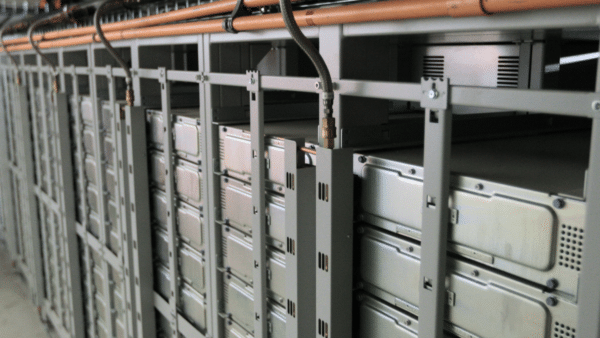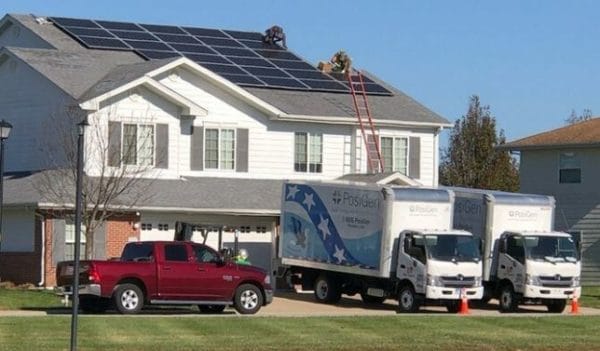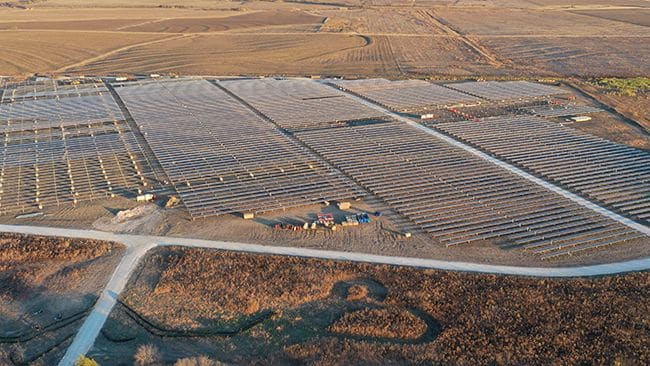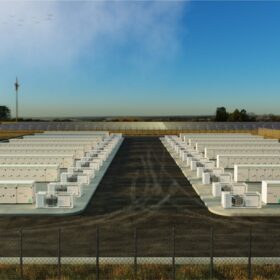All of the new generating capacity added between June and November 2020 came from wind (2,987 MW), solar (2,218 MW), and hydropower (24 MW).
In November alone, all new U.S. utility-scale electrical generation capacity added came from five new units of wind (882 MW) and 10 units of solar (626 MW).
The additions were reported by the SUN DAY Campaign, which reviewed data from the Federal Energy Regulatory Commission.

Renewable energy sources now account for 23.52% of the nation’s total available installed generating capacity. Wind’s share (9.42%) now surpasses nuclear power (8.61%). Solar (4.16%) eclipses oil (3.31%). The generating capacity of wind and solar is now 13.58% of the nation’s total, not counting distributed solar, SUN DAY said.
The report also said that “high probability” generation capacity additions for wind (minus anticipated retirements) reflect a projected net increase of 27,622 MW; solar is foreseen growing by 32,784 MW. By comparison, net growth for natural gas will be 21,489 MW.
In a separate analysis, the Energy Department’s Energy Information Administration (EIA) said that natural gas burned to generate electric power reached a record high in 2020, averaging 31.6 billion cubic feet per day (Bcf/d). That was 2% more than the 2019 average. The increase occurred despite slightly lower total U.S. electricity consumption. Natural gas consumed by electric power plants set a daily record high of 47.2 Bcf at the end of July, EIA said.
Natural gas spot prices at the benchmark Henry Hub in Louisiana averaged $2.05 per million British thermal units (MMBtu), the lowest annual average price in decades. In June, the average Henry Hub price fell to $1.66/MMBtu.
Moss Landing enters service
Vistra said that its Moss Landing Energy Storage Facility connected to the power grid and began operating in mid-December.
At 300 MW/1,200 MWh, the lithium-ion battery storage system located at Vistra’s Moss Landing Power Plant in Monterey County, California, will be among the largest of its kind in the world.

Image: Vistra Energy/Meranda Cohn
Construction is underway on Phase II, which will add 100 MW/400 MWh to the facility by August, bringing its total capacity to 400 MW/1,600 MWh.
Phase I can power roughly 225,000 homes during peak electricity pricing periods. The system is made up of more than 4,500 stacked battery racks or cabinets, each containing 22 battery modules.
Phases I and II of the Vistra Moss Landing Energy Storage Facility are backed up by long-term resource adequacy contracts with Pacific Gas and Electric Company (PG&E).
The site can handle up to 1,500 MW/6,000 MWh of storage capacity should market and economic conditions support it.
Duke Energy buys 144 MW project
Canadian Solar Inc. said that its Recurrent Energy business unit completed the sale of the 144 MW Pflugerville Solar project to Duke Energy Renewables, a unit of Duke Energy.
The project is under construction in Travis County, Texas and is expected to enter service in mid-2021. Energy will be sold to Austin Energy under a 15-year power purchase agreement.
This is the fifth utility-scale project that Duke Energy Renewables has acquired from Recurrent Energy, including the Rambler Solar project in Texas, which reached commercial operation in 2020.
Pflugerville will use roughly 489,600 pieces of Canadian Solar’s bifacial BiKu modules across 932 acres. The engineering and construction for the project is being performed by Signal Energy. To fund construction, Recurrent Energy in August closed debt and tax equity financing totaling over $234 million.
Military housing gains solar
Hunt Military Communities, an owner of U.S. military housing, said it is adding solar rooftop PV systems across its facility at Scott Air Force Base in Illinois.

Image: Hunt Military Communities
The 2.8 MW PV system will produce around 3.5 million kWh of electricity annually. It will enable the community to draw 15-20% of its total electricity supply from renewable energy.
Hunt has installed more than 20 MW of solar across its housing communities nationwide. The Scott project is slated to be completed by late 2021.
Installation and operation will be handled by affiliates of True Green Capital Management, Hunt’s solar energy partner. True Green has installed roughly 12 MW of solar across six military housing sites.
Hunt Military Communities owns roughly 52,000 homes on Navy, Air Force, Marine Corps, and Army installations across the U.S.
Grant supports inverter control research
Researchers from Binghamton University will receive $2.6 million from the U.S. Department of Energy Solar Energy Technologies Office to develop ways to reliably support higher amounts of solar power on the grid.
The three-year project will focus on advanced grid-forming PV inverter control technologies so that the renewable energy source can be more efficiently and reliably integrated with electricity generated by coal, natural gas or other non-renewable methods.
The goal of the research is to demonstrate a new grid-forming control algorithm at a 1 MW hybrid PV plant at the Brookhaven National Laboratory on Long Island. The proposed controls will be scalable and replicable to multiple hybrid PV plants.
Principal investigator on the research, Associate Professor Ziang “John” Zhang, said that today’s power system uses synchronous generators that have been well studied for decades. It is well known how they will behave under different conditions — as a rotating mass, a synchronous generator following Newton’s Law of Motion. However, renewable energies such as a PV system connect to the power system through an inverter, “which will behave based on the control software.”
One issue facing the Binghamton team, he said, is that alternating current generated by traditional methods is able to naturally synchronize with existing power on the grid if the electricity is properly fed into it. A large amount of renewable energy in the grid could cause problems if we lack a thorough understanding of how these inverters will behave under different grid conditions.
“The way we currently use renewable generation is that we just dump all of the power into the grid and conventional generators are doing all the balancing work,” Zhang said. “If we have fewer conventional generators in the system, something has to pick up this balancing work.”
This content is protected by copyright and may not be reused. If you want to cooperate with us and would like to reuse some of our content, please contact: editors@pv-magazine.com.









By submitting this form you agree to pv magazine using your data for the purposes of publishing your comment.
Your personal data will only be disclosed or otherwise transmitted to third parties for the purposes of spam filtering or if this is necessary for technical maintenance of the website. Any other transfer to third parties will not take place unless this is justified on the basis of applicable data protection regulations or if pv magazine is legally obliged to do so.
You may revoke this consent at any time with effect for the future, in which case your personal data will be deleted immediately. Otherwise, your data will be deleted if pv magazine has processed your request or the purpose of data storage is fulfilled.
Further information on data privacy can be found in our Data Protection Policy.